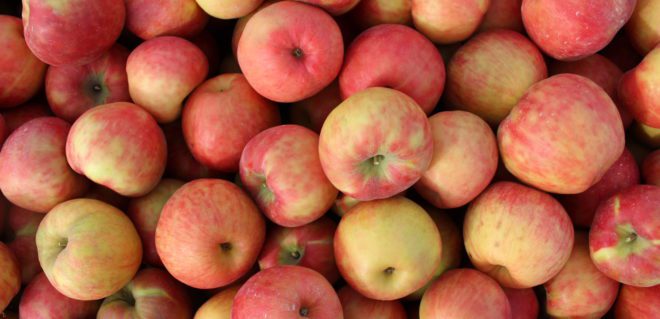

Jun 3, 2019Small-time apple growers inflate ag census numbers
The USDA counted fewer middle-size farms across American agriculture during the 2017 agriculture census, and fruit growers are no exception.
Take apple growers, for instance. The number of farms growing apples during the same time increased from 25,129 to 26,408, but it would be a mistake to think that there’s a been a sudden growth in the number of serious apple producers. The U.S. total acres of apples decreased slightly, from 384,237 to 381,718, during 2012-2017, according to the census.


“Would you call somebody with a third of an acre of apples a farm?” asked economist Daniel Sumner, director of the University of California (UC) Agricultural Issues Center at UC Davis. “And the answer is, ‘Yeah, maybe, kinda – but not really.’”
The census shows a jump over the last five years in the number of farms with less than an acre devoted to apples, from 10,144 to 12,973. Apple farms with 1-4.9 acres decreased slightly, from 8,124 to 8,486 from 2012-2017.
Sumner added the 2017 numbers to show how many of the farms are small.
“Out of the 26,000 apple growers, we’ve got over 20,000 listed in the census with less than 5 acres,” he said. “And they have a total of 20,000 acres out of the 381,000 acres.”


Large apple farms, those of 500 acres or more, also grew over the last five years, from 107 farms to 118. Of that number, the largest farms – 1,000 acres or more – grew from 26 to 33. The growth of large farms may be due to consolidation.
Almost three-quarters of U.S. apple acres are tended by farms of more than 100 acres, Sumner said. He said that’s not to discount small-time growers who diversify. Sumner gave another theoretical example of a grower who might grow 50 acres of apples and 50 acres of several other crops as someone who can still make some “serious money” compared to a hobby farmer.
How one classifies the really small growers depends on perspective.
“They may make a little money at it,” he said. “Aunt Sally has a few apple trees and one Saturday a year she has a yard sale or something where she sells apples and makes a thousand bucks selling apples that morning for people. And that’s great, and I’m all for it. I think it’s wonderful.”
As sociology, or marketing, Sumner said, maybe the roughly 13,000 apple growers who have orchards less than one acre – or the 20,000 with less than 5 acres – are good news for bigger growers. They interact with the public often and help the industry tell its story.
“Those are our ambassadors,” he said. “They have a feel for what it takes to grow something, and it really gives people a flavor of what it’s like.”
And it’s the same for many other fruit crops, Sumner said. Tart cherry acres were down from 49,785 to 46,449, while the number of farms increased from 3,052 to 3,581. The category for the smallest farms – less than an acre – grew by more than 700 farms over five years. And again, the vast majority of farms had fewer than 5 acres.
He said it’s an inevitable result from the USDA being asked to document more small farms. He doesn’t fault professionals at the National Agricultural Statistics Service itself, who, he said, “do a wonderful job of an impossible ask.”
But, he said, it is important to keep the agriculture census in proper perspective.
“When you read these numbers, you kind of have to take it with a grain of salt,” he said.
– Stephen Kloosterman, associate editor
Above, a bin of Honeycrisp apples waits in a Washington State orchard. Photo: Stephen Kloosterman















